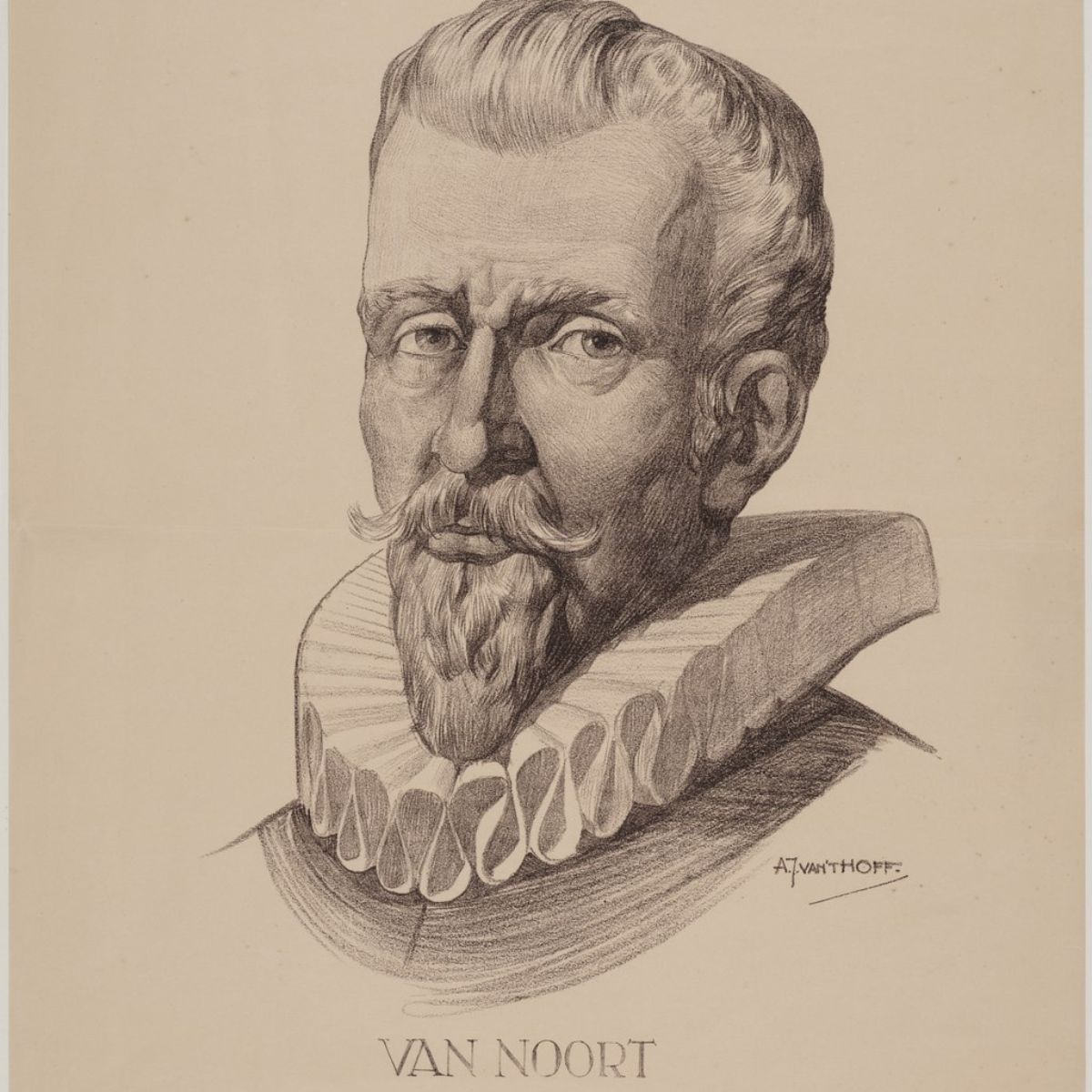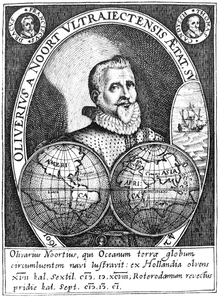Olivier van Noort was born in 1558 in Utrecht. He left Rotterdam on 2 July 1598 with four ships and a plan to attack Spanish possessions in the Pacific Ocean and to trade with Asia and the Spice Islands.

It is said that his ships were of low quality, especially for the time period, and the crew was unruly. Oliver van Noor was a predecessor to Henry Hudson.
Life and Voyages
Oliver van Noort was the first Hollander to sail around the world. Incidentally, he was the fourth navigator to succeed in this dangerous enterprise since, in the year 1520, the little ships of Ferdinand Magellan had accomplished the feat of circumnavigating the globe.
We know very little about Olivier van Noort's voyage and life despite his accomplishments.
He was a modest man, and except for a few lines of personal introduction which appear in the printed story of his voyage, which was published in Rotterdam, his hometown, in the year 1620, in which he tells us that he had made many trips to different parts of the world.
Unlike his peers, he was not very educated but had learned quite a bit through the common schools.

Most likely, he learned navigation through being a mate or captain of a small schooner.
In the year 1595, Oliver van Noort was the owner of the "Double White Keys," an ale house in the town of Rotterdam.
Van Noort had put away some money and was able to raise enough money from his customers to found a trading company. With his trading company, he was able to petition the province of Holland to assist him with an expedition to the Chili or the islands of Moluccas.
To make this important enterprise successful, the estates general were asked to give Van Noort and his trading company freedom of export and import for at least six voyages and to present it with ten cannon and twelve thousand pounds of gunpowder.
He asked for much in the hope of obtaining at least part of what he asked. In the winter of 1597, his request was granted. He received four guns, 6,000 pounds of bullets, 12,000 pounds of gunpowder, and a special grant which relieved him of the customary export tax for two voyages. This demand for cannon, gunpowder, and bullets gives us the impression that the expedition expected to meet with serious trouble.
Van Noort's crew partnered with Dutch merchants to travel together. They left Amsterdam in the summer of 1597 with four ships. Van Noort commanded the Mauritius.
The crew's first stop was Plymouth, where Van Noort met a British sailor, Captain Melis, who had sailed around the world and was familiar with the stormy regions around the southern part of South America.
The first part of the trip was along the coast of Africa, and then the fleet made their way to the Portuguese island Principe to attain fresh water and food.
Here, the Hollanders encountered an ambush by the Portuguese, which cost them 3 lives, including Olivier van Noort's brother and Captain Melis, whom they were depending on to guide them through the Strait of Magellan.
In retaliation, Admiral van Noort followed a nearby river into the interior of the Portuguese colony and burned down all the plantations and houses he could find.
By February, the fleet reached Rio de Janeiro, another Portuguese town, where they sought more provisions. The reception here was more cordial, but the Portuguese still ended up becoming hostile. Van Noort left the area not receiving fresh provisions.
The expedition hit a snag, with several of the men falling ill due to lack of food and poor hygiene. After multiple attempts to find a safe place to land and being driven away by the Portuguese, Van Noort found a little island named St. Clara. It was here he was able to build a fort and nurse many of his men back to health.
Van Noort sailed through the Magellan Strait and captured a number of ships (Spanish and otherwise) in the Pacific. He lost two ships on the way due to a storm.
In November and December 1600, he established a berth for his two remaining sailboats, Mauritius and Eendracht, in the surroundings of Corregidor Island at Manila Bay in the Philippines.
From there, he engaged in what was perceived by the Spanish as pirate activities, targeting the sailing route to and from Manila. This situation was ended after the naval combat of Fortune Island on December 14, 1600. The Spanish lost their flagship, the galleon San Antonio (its wreck would be found in 1992 and yield a treasure in porcelain and gold pieces), but the Spanish captured the Dutch Eendracht, making van Noort's position untenable and forcing him to retire from the Philippines.
Van Noort returned to Rotterdam via what would become the Dutch East Indies and the Cape of Good Hope on 26 August 1601 with his last ship, the Mauritius, and 45 of originally 248 men. The venture barely broke even but was the inspiration for more such expeditions. The United Dutch East India Company was formed a few months later.
